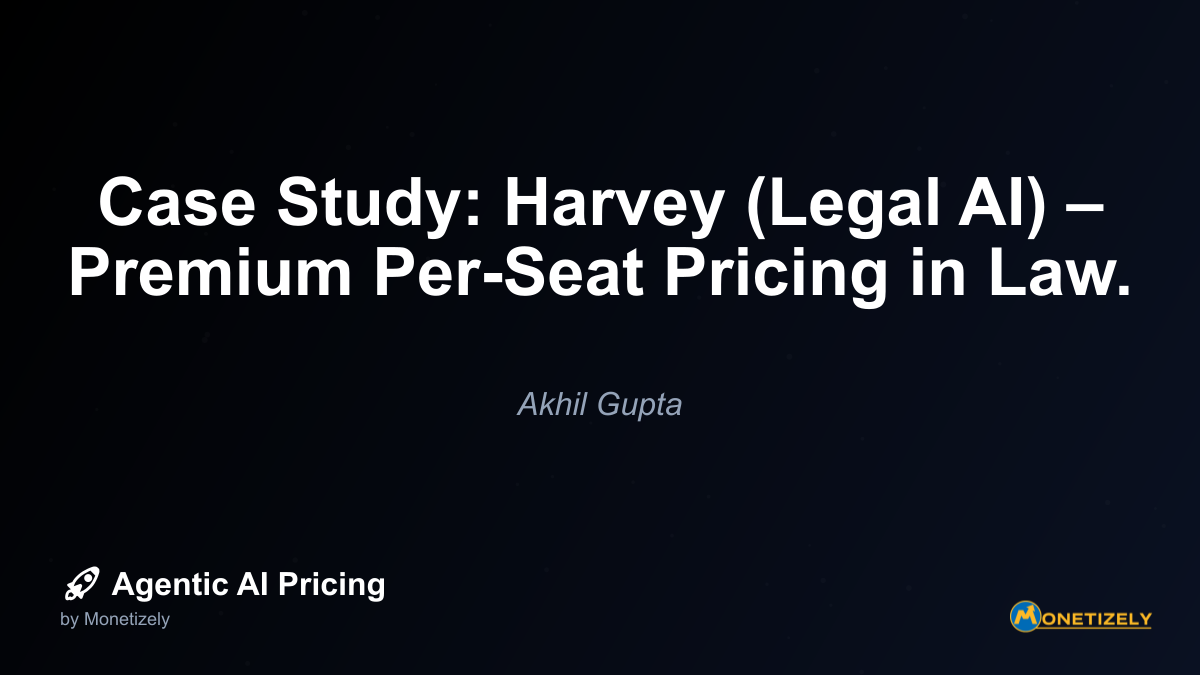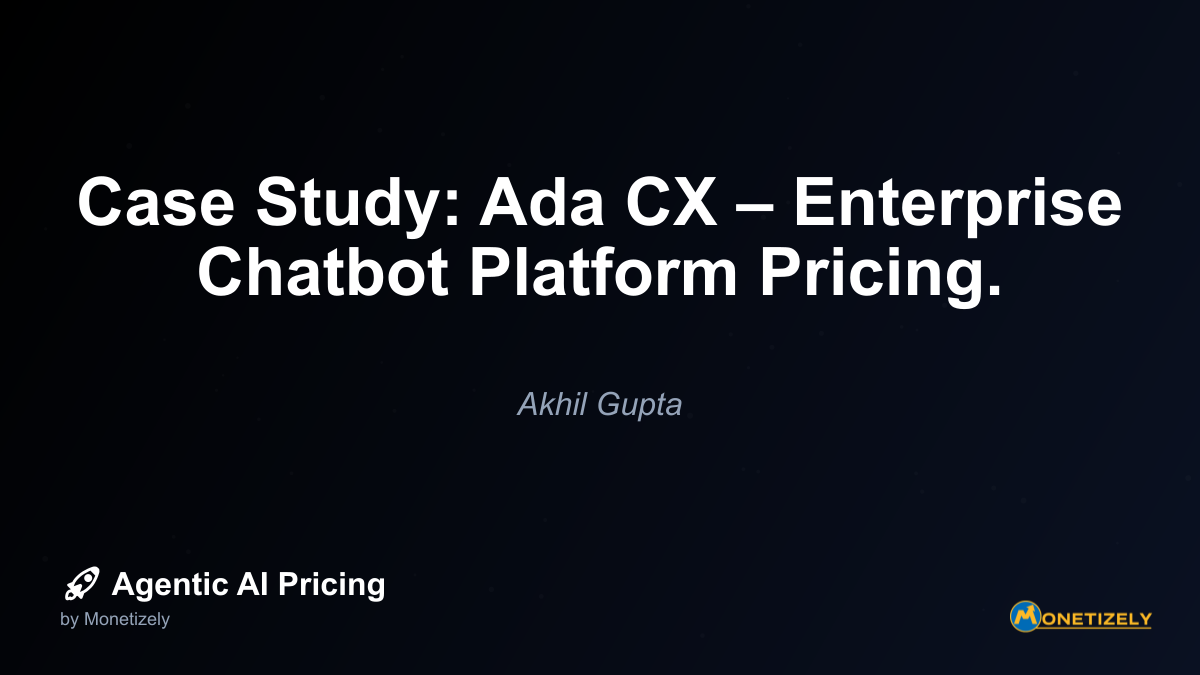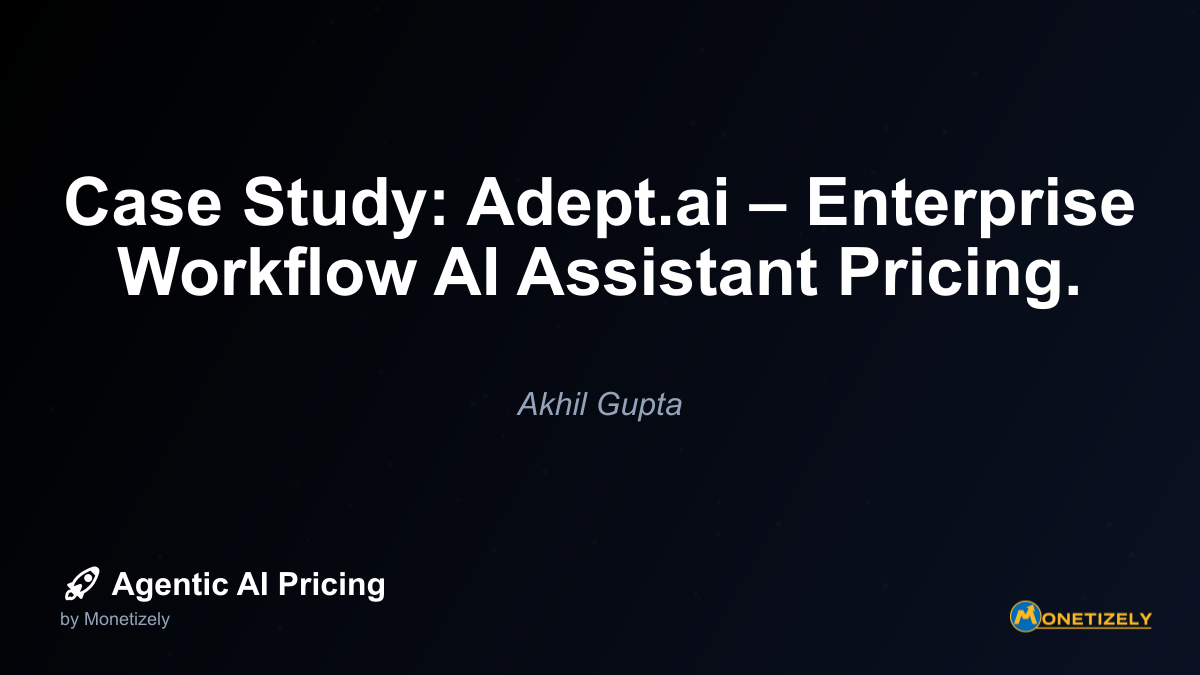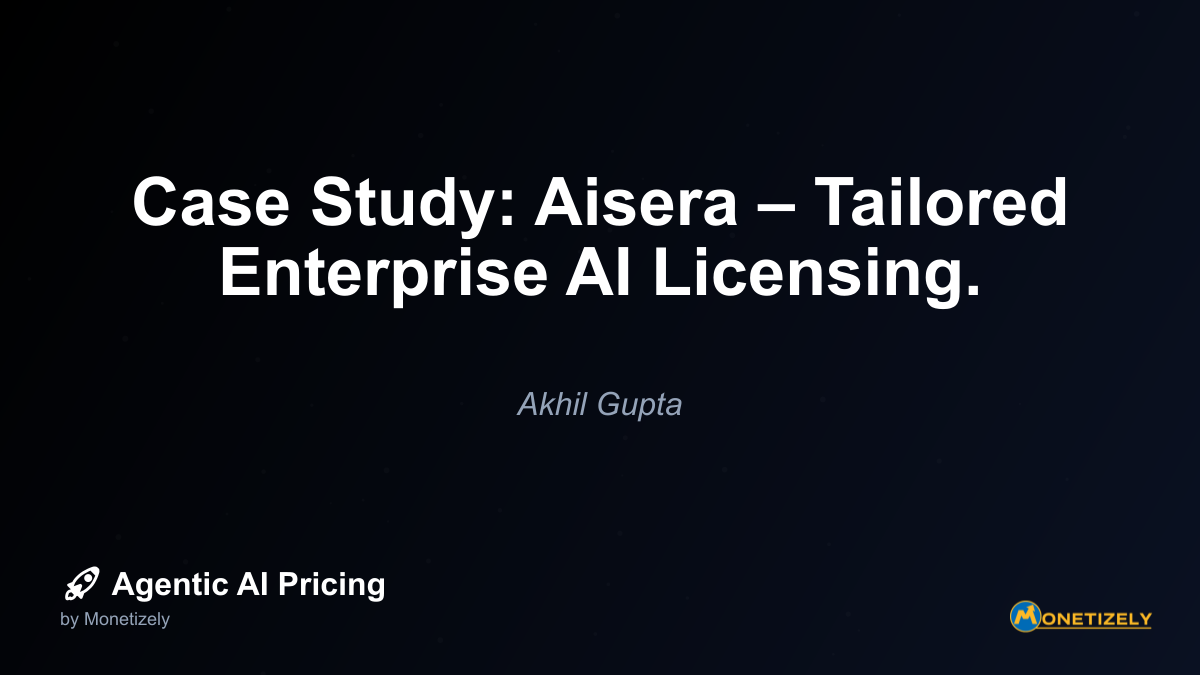· Akhil Gupta · Case Studies · 6 min read
Case Study: Harvey (Legal AI) – Premium Per-Seat Pricing in Law.
AI and SaaS Pricing Masterclass
Learn the art of strategic pricing directly from industry experts. Our comprehensive course provides frameworks and methodologies for optimizing your pricing strategy in the evolving AI landscape. Earn a professional certification that can be imported directly to your LinkedIn profile.

Lessons for Other AI Companies from Harvey’s Pricing Strategy
While Harvey operates in a specialized market with unique economics, its pricing approach offers valuable lessons for AI companies across sectors:
1. Segment by Value Creation, Not Just Size
Harvey’s focus on elite law firms demonstrates the importance of segmenting not just by company size but by the value that can be created for specific users. For many AI companies, this might mean targeting industries or roles where time savings translate directly to revenue or cost savings.
For example, an AI tool for financial analysts might command premium pricing if it can demonstrate that it saves time for professionals who influence million-dollar investment decisions. Similarly, AI tools for radiologists, surgeons, or other high-billing medical professionals could justify premium pricing based on similar value-creation arguments.
2. Align Pricing Structure with Value Measurement
Harvey’s per-seat model works because law firms already measure productivity and billing at the individual attorney level. Other AI companies should similarly align their pricing structure with how value is measured in their target industries.
For instance, AI tools for sales might price based on revenue influenced rather than per user if that better aligns with how sales organizations measure success. AI tools for manufacturing might price based on output increases or defect reductions if those metrics better capture the value created.
As explored in Creating Value-Based Pricing Models for Agentic AI, successful pricing strategies must be anchored to measurable value creation that resonates with the customer’s own performance metrics.
3. Consider Premium-Only Positioning
While many AI companies feel pressure to offer a freemium tier or low-cost entry point, Harvey’s approach suggests that some AI products might be better positioned as premium-only offerings. This strategy can be particularly effective when:
- The product delivers substantial, measurable ROI
- The target users have high willingness to pay
- Lower-priced alternatives might cheapen the brand perception
- The development and support costs require premium pricing to sustain the business
This premium-only approach also simplifies messaging and eliminates the “feature segmentation” challenge of deciding which capabilities to reserve for higher tiers.
4. Focus on ROI Narrative Over Feature Lists
Harvey’s success in commanding premium prices comes not from having the longest feature list but from having a clear, compelling ROI narrative that resonates with law firm leaders. The focus is on outcomes (time saved, additional revenue generated) rather than technical specifications.
Other AI companies can learn from this by developing clear ROI calculators and case studies that quantify the economic impact of their tools. This shifts the conversation from “Is this worth $X?” to “This generates a 5X return on investment.”
Implementation Challenges and Mitigations
Despite the compelling economics, Harvey and similar premium-priced AI tools face several implementation challenges:
1. Initial Adoption Hurdles
Even with a clear ROI case, securing the initial adoption can be challenging due to:
- Skepticism about AI capabilities
- Security and confidentiality concerns
- Change management resistance
- Budget approval processes
Harvey appears to have addressed these challenges through:
- Focused pilot programs with influential partners
- Strong security and compliance guarantees
- Demonstrable results from early adopters
- Tailored onboarding and training
2. Usage Monitoring and Value Demonstration
For premium-priced tools, ongoing usage monitoring and value demonstration are critical to retention. If users don’t regularly engage with the tool or can’t see the value created, renewals become challenging.
Harvey likely addresses this through:
- Usage analytics dashboards for firm management
- Time-saving metrics and ROI tracking
- Regular business reviews with clients
- Continuous feature enhancement based on usage patterns
3. Competitive Defense
As the legal AI space becomes more crowded, Harvey will face increasing competitive pressure from both specialized legal AI tools and general-purpose AI platforms adding legal capabilities.
To maintain its premium positioning, Harvey will need to:
- Continuously improve its specialized legal knowledge
- Deepen integration with law firm workflows
- Expand capabilities to address more legal use cases
- Maintain exclusivity through continued innovation
The Future of Legal AI Pricing
Harvey’s premium pricing model may represent just the beginning of sophisticated pricing approaches in legal AI. Several trends suggest where the market might be heading:
1. Outcome-Based Pricing Components
Future legal AI tools might incorporate outcome-based pricing elements, where a portion of the fee is tied to measurable outcomes like:
- Percentage of time saved on specific document types
- Accuracy rates for legal research
- Success rates in predicting case outcomes
- Efficiency improvements in specific practice areas
This approach would further align the AI provider’s incentives with the law firm’s goals.
2. Practice Area Specialization
As legal AI matures, we may see more specialized tools with pricing tailored to specific practice areas based on the economic value created in each context. For example:
- M&A due diligence tools priced as a percentage of deal value
- Litigation tools priced based on case complexity and stakes
- Compliance tools priced based on regulatory risk reduction
This specialization could allow for even more precise value-based pricing.
3. Hybrid Human-AI Service Models
Some legal AI providers may evolve toward hybrid service models that combine AI capabilities with specialized human expertise, creating a new category between pure software and traditional legal services.
These hybrid models might use pricing approaches that blend elements of software subscription with professional services fees, potentially disrupting both traditional law firms and pure software providers.
Conclusion: The Harvey Model as a Blueprint for Premium AI Pricing
Harvey’s reported $1,000+ per user per month pricing represents a bold departure from the race-to-the-bottom pricing seen in many AI categories. By focusing exclusively on high-value users in an industry where time has extraordinary economic value, Harvey has created a pricing model that aligns perfectly with the value it delivers.
For other AI companies, Harvey offers a compelling blueprint for premium pricing based on several key principles:
- Target users where time has quantifiable, high economic value
- Structure pricing to align with how value is measured in the industry
- Build a clear, compelling ROI narrative focused on outcomes
- Consider premium-only positioning for appropriate products and markets
- Invest in ongoing value demonstration and usage analytics
While not every AI tool can command Harvey’s premium prices, the underlying principles of value-based pricing apply across markets. By focusing relentlessly on the economic value created rather than the cost to deliver or competitor pricing, AI companies can escape commoditization and build sustainable, profitable businesses.
As the AI landscape continues to evolve, we can expect to see more sophisticated pricing approaches that better align with the transformative value these tools can deliver. Harvey’s premium per-seat model may just be the beginning of a broader shift toward value-based pricing in the AI industry.
For large law firms evaluating tools like Harvey, the calculation is straightforward: if an AI assistant can save even a fraction of an attorney’s time each month, the ROI is compelling. For the AI companies themselves, the lesson is equally clear: in the right market, with the right value proposition, premium pricing isn’t just possible—it’s optimal.
Co-Founder & COO
Akhil is an Engineering leader with over 16+ years of experience in building, managing and scaling web-scale, high throughput enterprise applications and teams. He has worked with and led technology teams at FabAlley, BuildSupply and Healthians. He is a graduate from Delhi College of Engineering and UC Berkeley certified CTO.
Pricing Strategy Audit
Let our experts analyze your current pricing strategy and identify opportunities for improvement. Our data-driven assessment will help you unlock untapped revenue potential and optimize your AI pricing approach.




